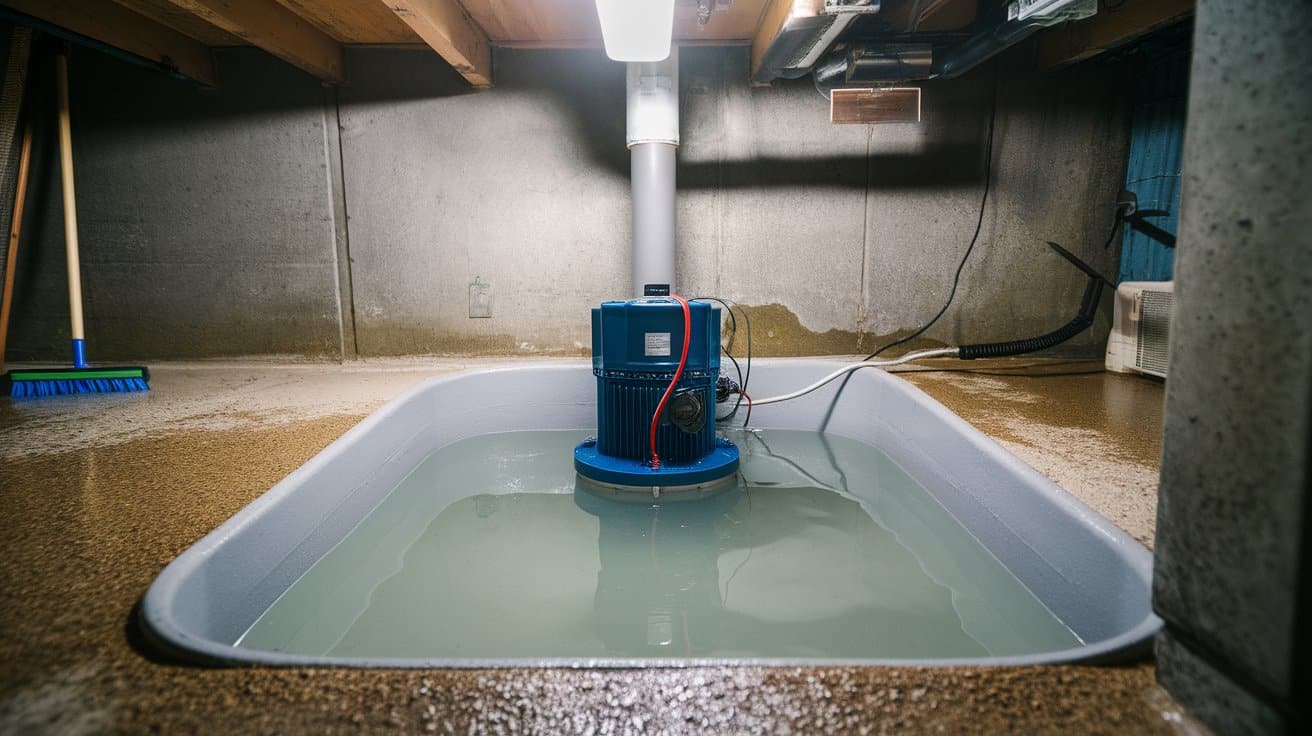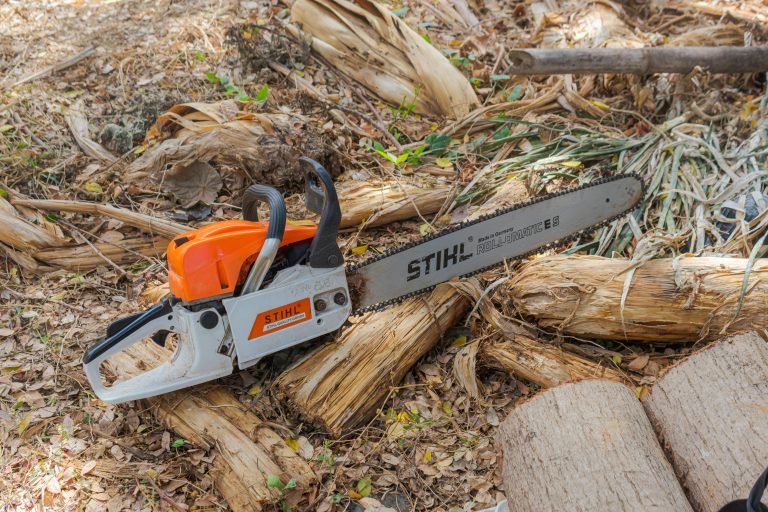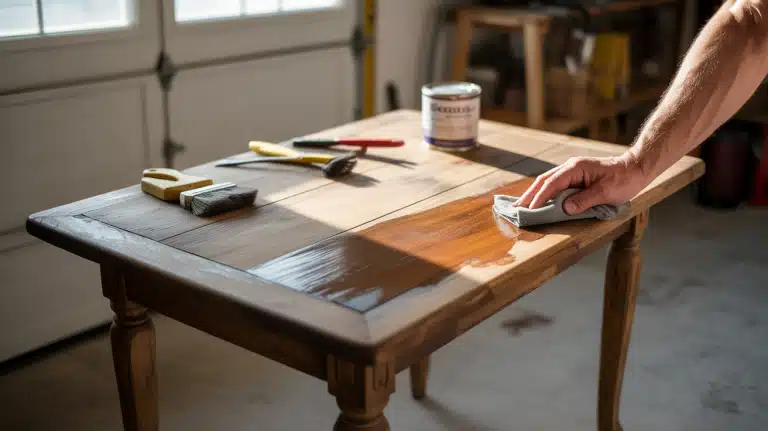Why Your Sump Pump Won’t Stop Running and How to Fix It?
That constant humming sound from your basement is driving you nuts, isn’t it?
I know exactly how frustrating it feels when your sump pump runs non-stop, racking up your electricity bill while you wonder if something’s seriously wrong.
You’re not alone in this problem. Most homeowners face this issue at least once, and the good news is that it’s usually fixable without needing to call an expensive repair service.
I want to show you the reasons why your sump pump won’t stop running and provide you with a step-by-step solution using a simple piggyback float switch replacement.
By the end of this blog, you’ll know how to install this fix yourself, saving both money and sleepless nights.
How a Sump Pump Works?
Your sump pump sits in a pit below your basement floor, waiting for water to collect. When water levels rise, a float switch activates the pump, causing it to turn on and discharge water through a pipe.
A float switch operates similarly to a toilet tank trigger, rising with the water and signaling the pump to start. If this cycle breaks down, the pump may run nonstop. We’ll cover specific causes and fixes in the next sections.
This simple on-off cycle should happen only when needed. When your pump runs constantly, it means this cycle is broken somewhere. The float might be stuck, the switch could be faulty, or water keeps flowing in faster than it can be pumped out.
Common Causes of A Sump Pump that Won’t Stop Running
Understanding these common causes helps homeowners identify problems early and take corrective action before costly damage occurs.
1. Stuck Float Switch
The float switch tells your pump when to start and stop, based on the water level. When it becomes entangled in debris or gets wedged against pit walls, it can’t move freely. This keeps the pump running even when water levels are normal.
Sediment buildup or small objects interfere with the float’s movement over time. The switch gets stuck in the “on” position, preventing proper cycling. Regular cleaning prevents this common problem.
2. Faulty Float Switch
Internal electrical components deteriorate and fail after years of operation. Corroded contacts prevent the switch from sending the “stop” signal to the pump. The pump keeps running despite the correct float movement.
These electrical problems start intermittently before becoming permanent. Issues worsen over time, beginning with longer run cycles. Replacing the switch prevents costly motor damage.
3. Wrong Pump Size
Undersized pumps can’t handle the incoming water volume during heavy rains or snowmelt. The pump runs continuously, trying to keep up with demand. Water levels never drop enough to trigger the “off” switch.
This happens when pumps are replaced without considering current drainage needs. Changes in landscaping or neighborhood development can increase water flow. Professional sizing assessment ensures adequate capacity.
4. Clogged Discharge Pipe
Blockages in the exit pipe prevent water from leaving efficiently. Common obstructions include frozen pipes, debris, or collapsed sections. Back-pressure forces the pump to work harder while water levels stay high.
These clogs develop gradually, reducing flow over time. Ice dams and debris are common culprits at discharge points. Regular maintenance of the entire discharge system prevents overworking.
5. High Water Table
Underground water pressure forces water into your pit faster than usual. This occurs during heavy rains, spring thaws, or seasonal fluctuations in the water table. An increased inflow can overwhelm even properly sized pumps.
High water table conditions can persist for weeks or months. Continuous groundwater pressure means rapid pit refilling after each cycle. Understanding these patterns helps monitor system performance.
6. Damaged Check Valve
A failing check valve allows pumped water to flow back into the pit. This creates a cycle where discharged water immediately returns, triggering another cycle. The pump appears to run constantly due to this backward flow.
Check valve problems cause short, frequent cycles or immediate restarts. The internal mechanism may be stuck open or installed backward. Proper valve installation and maintenance prevent this wasteful cycling.
Risks of A Continuously Running Sump Pump
1. Motor Burnout: Your pump motor isn’t designed to run 24/7. Running non-stop causes the motor to overheat and fail early; this is one of the most common and costly consequences of float switch failure. Most motors last 7-10 years with regular use; however, constant operation can cause them to fail within months.
2. Higher Electric Bills: A running sump pump consumes a significant amount of electricity. You’ll notice a significant increase in your monthly bill. Some homeowners report increases of $50-100 per month when their pump won’t stop.
3. Basement Flooding Risk: When an overworked pump finally dies, you’re left with no protection. Water will fill your basement quickly during the next storm. The cleanup costs far exceed pump repair expenses.
4. Shortened Equipment Life: All pump components wear out faster under constant stress. The impeller, seals, and housing deteriorate quickly. You’ll need expensive replacements sooner than expected.
5. System Failure During Peak Need: Pumps that run continuously often fail during heavy rains when you need them most. This timing creates the worst possible flooding scenario for your home.
Tools and Materials You’ll Need
You’ll need to gather the necessary tools and materials beforehand to ensure a smooth installation process without any interruptions.
| Tools | Materials |
|---|---|
| Head Screwdriver | Piggyback Float Switch |
| Wire Strippers | Mounting Screws |
| Pliers | Zip Ties |
| Adjustable Wrench | Cable Clamps |
| Voltage Tester | Rubber Gasket/Seal |
Step-By-Step Guide to Fix Sump Pump
Fixing a sump pump that won’t stop running requires a systematic approach. I’ll guide you through each step to identify and safely solve the problem.
Step 1: Diagnose the Issue
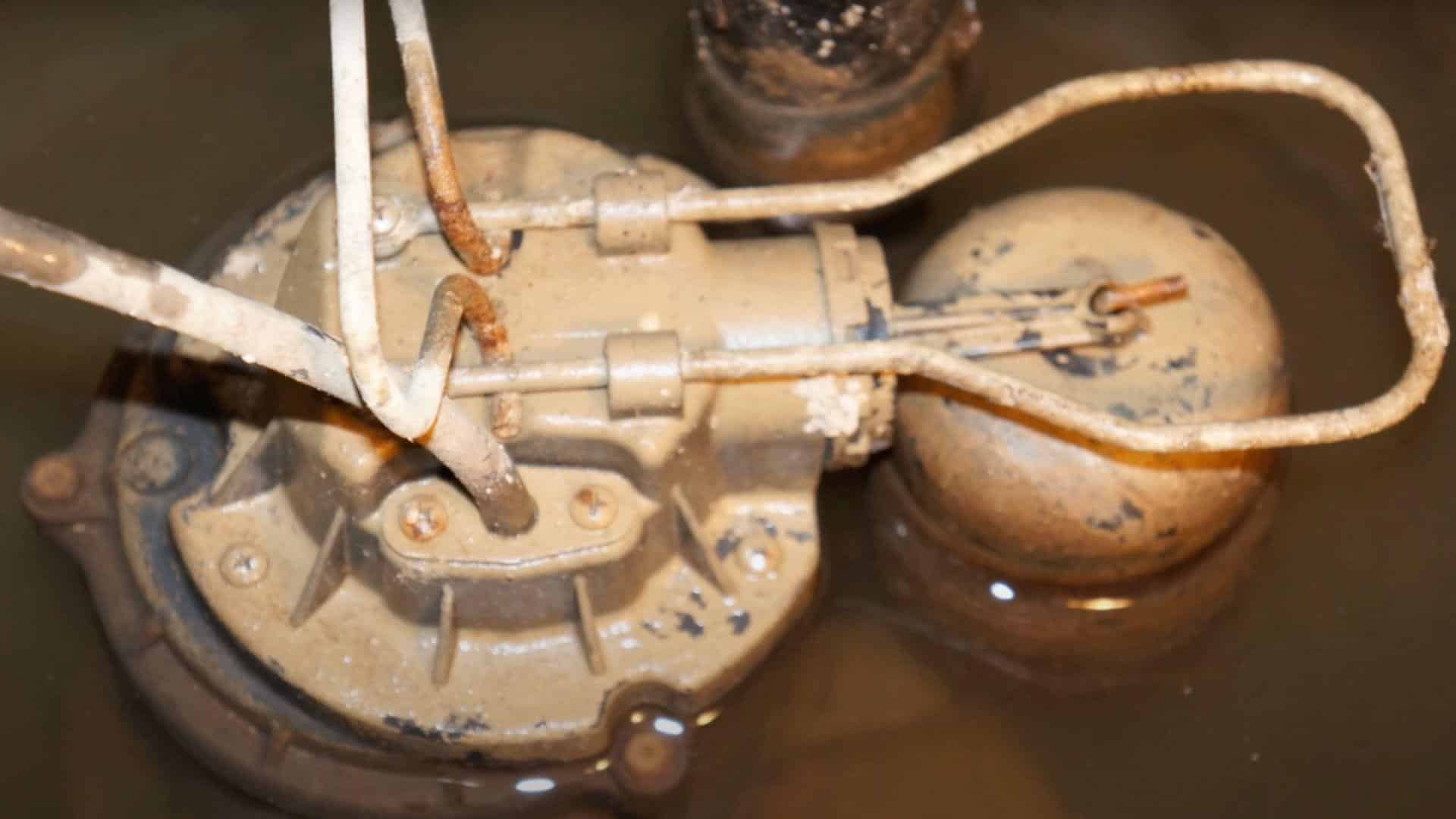
When your sump pump runs non-stop and starts making strange noises, it’s often a sign that it’s running dry; sucking air instead of water.
This typically indicates a malfunctioning float switch that fails to shut off the pump when the water level drops. As a result, the pump continues cycling unnecessarily, and those unusual sounds serve as an early warning of the issue.
Step 2: Consider Repair Options
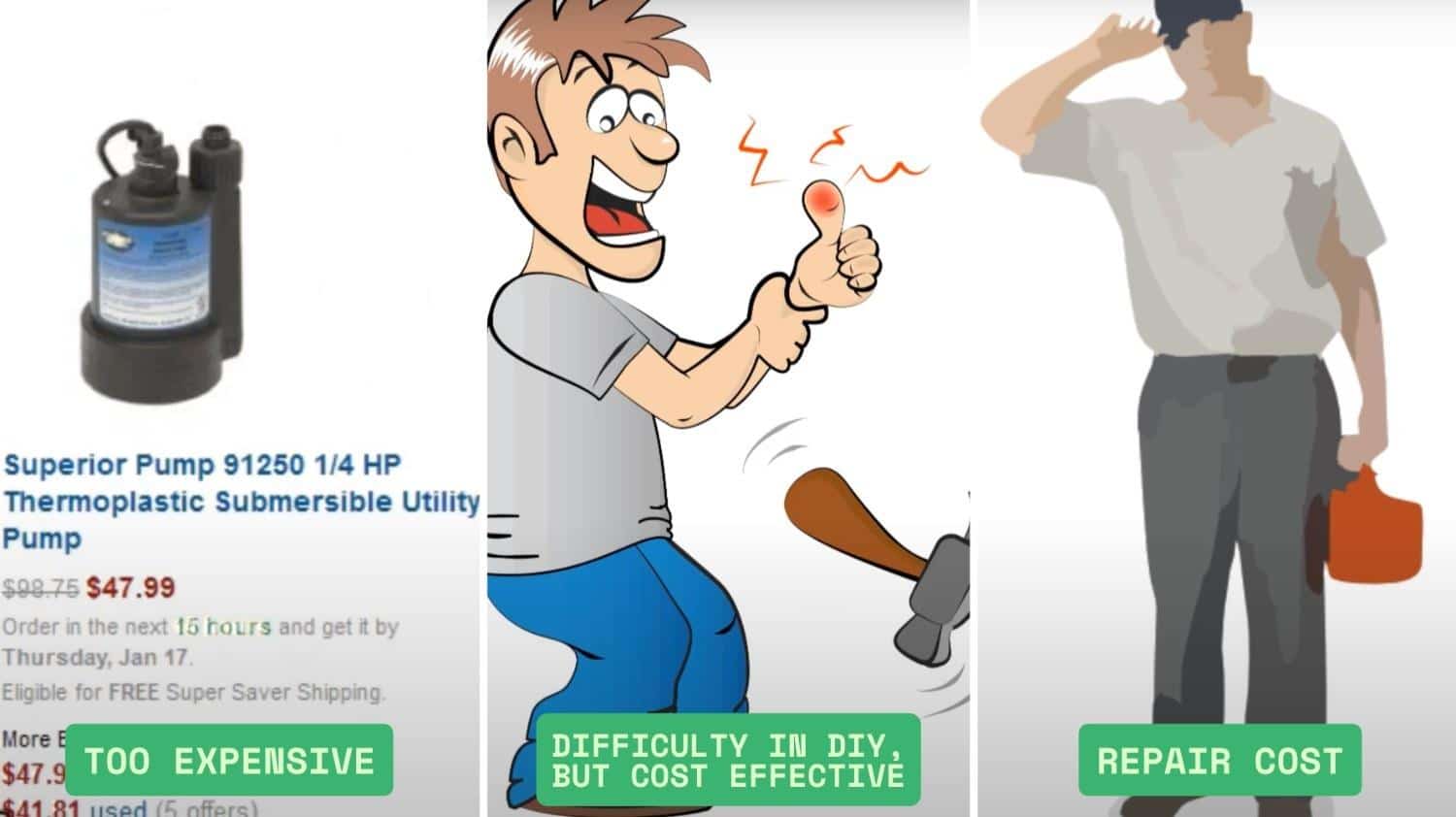
Homeowners facing this problem typically have three main choices: replace the entire pump unit, repair it with a new top assembly, or hire a professional service. Each option comes with significant costs and varying levels of complexity.
Pump replacement can be expensive and may require additional plumbing work. Professional repairs often cost as much as a new unit, while DIY repairs using manufacturer parts can be difficult to source for older models.
Step 3: Choose and Acquire a Solution
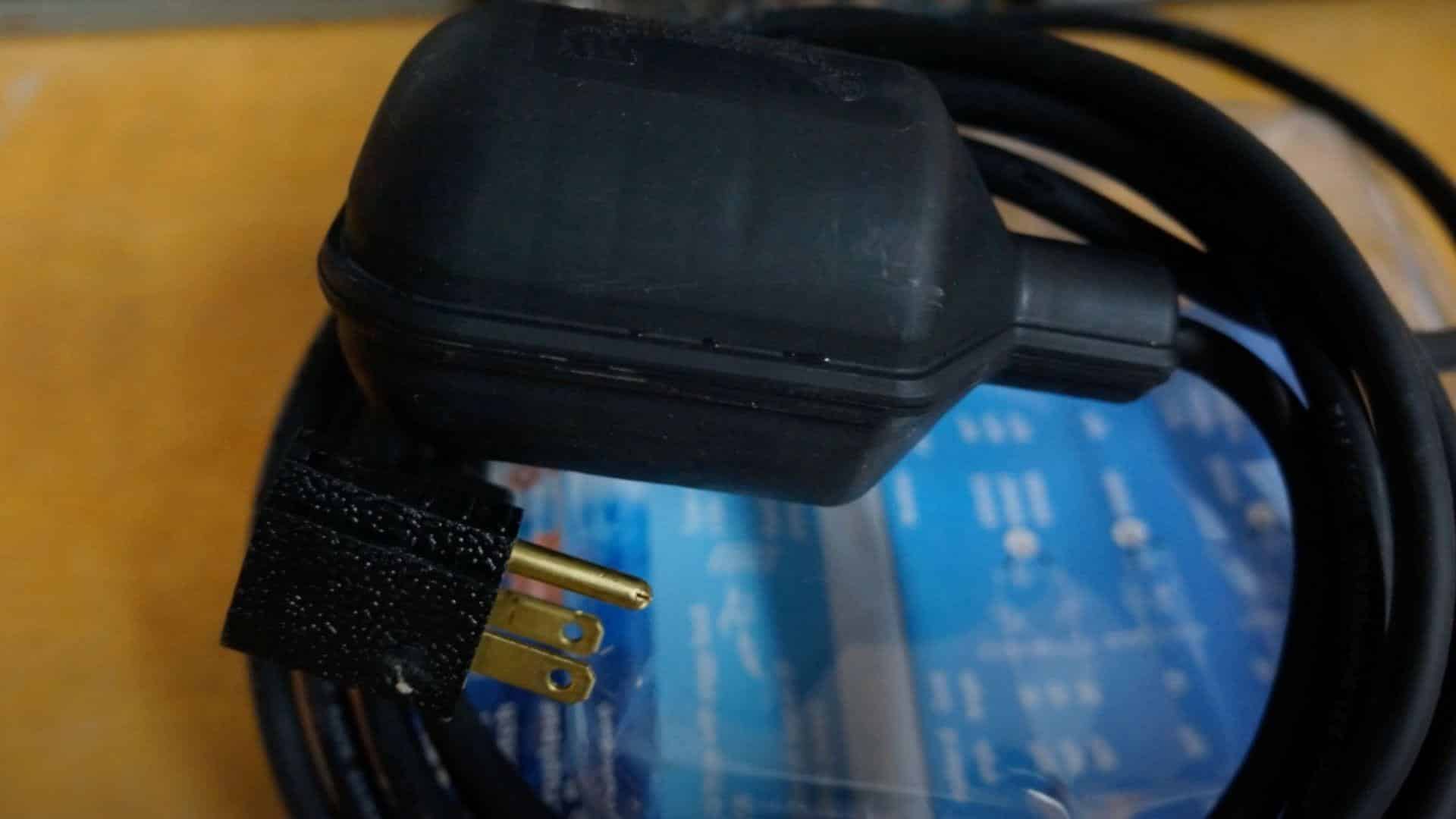
A mechanical float switch with piggyback plug offers a simple alternative to expensive repairs or replacements. This device operates independently of the pump’s original switch system, providing reliable water level control.
The piggyback design means no rewiring is required – it simply plugs into your wall outlet while your pump plugs into it. The tilt mechanism responds to water level changes and controls power flow to the pump automatically.
Step 4: Install the Float Switch
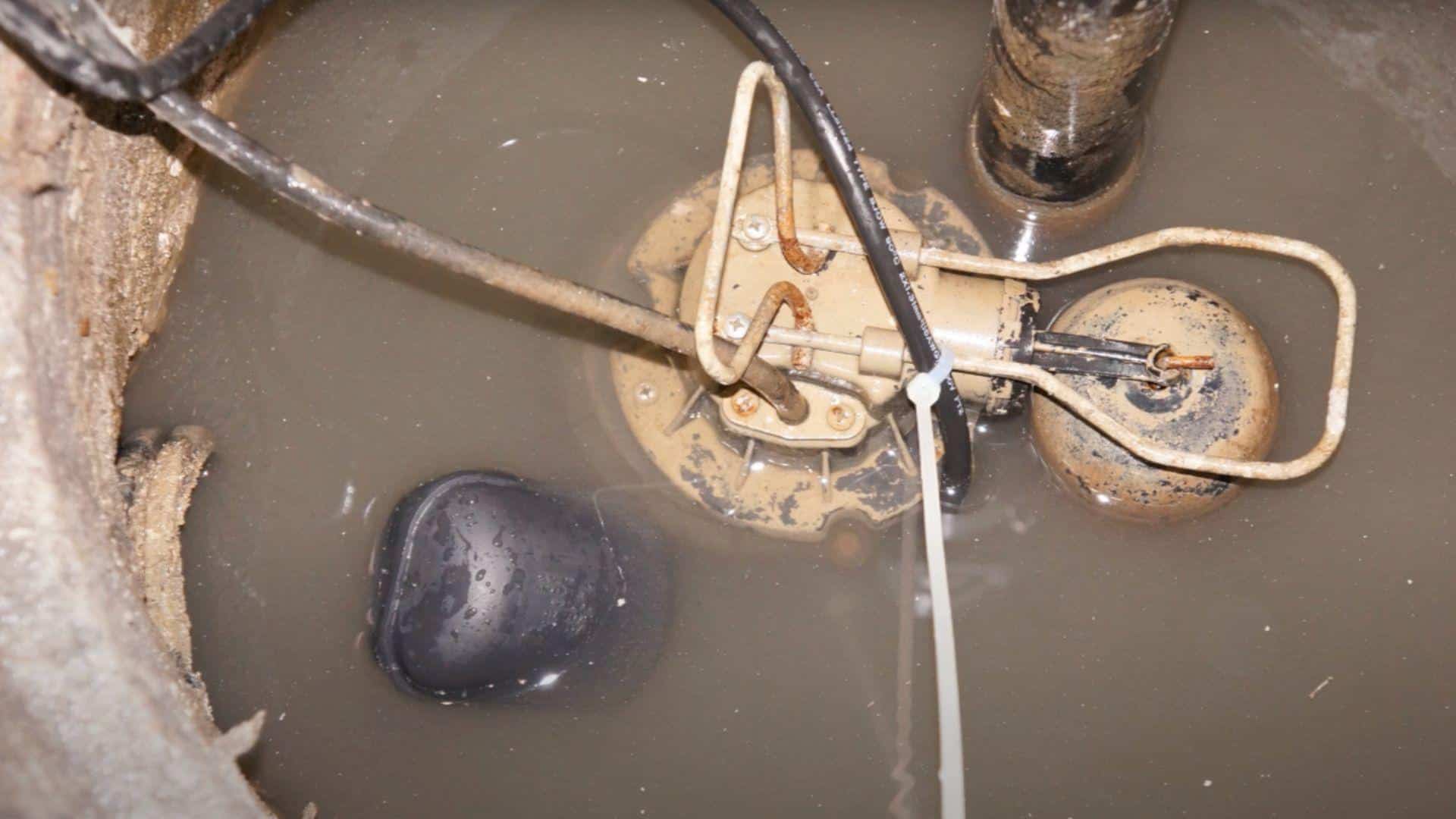
Installation begins by plugging the pump’s power cord into the piggyback switch device. The float cable must be positioned carefully and secured with zip ties to prevent tangling or interference with pump operation.
Proper positioning ensures the float can move freely within the sump pit without hitting walls or obstacles. The cable length should allow a full range of motion while keeping the float stable during water level changes.
Step 5: Test and Confirm Operation
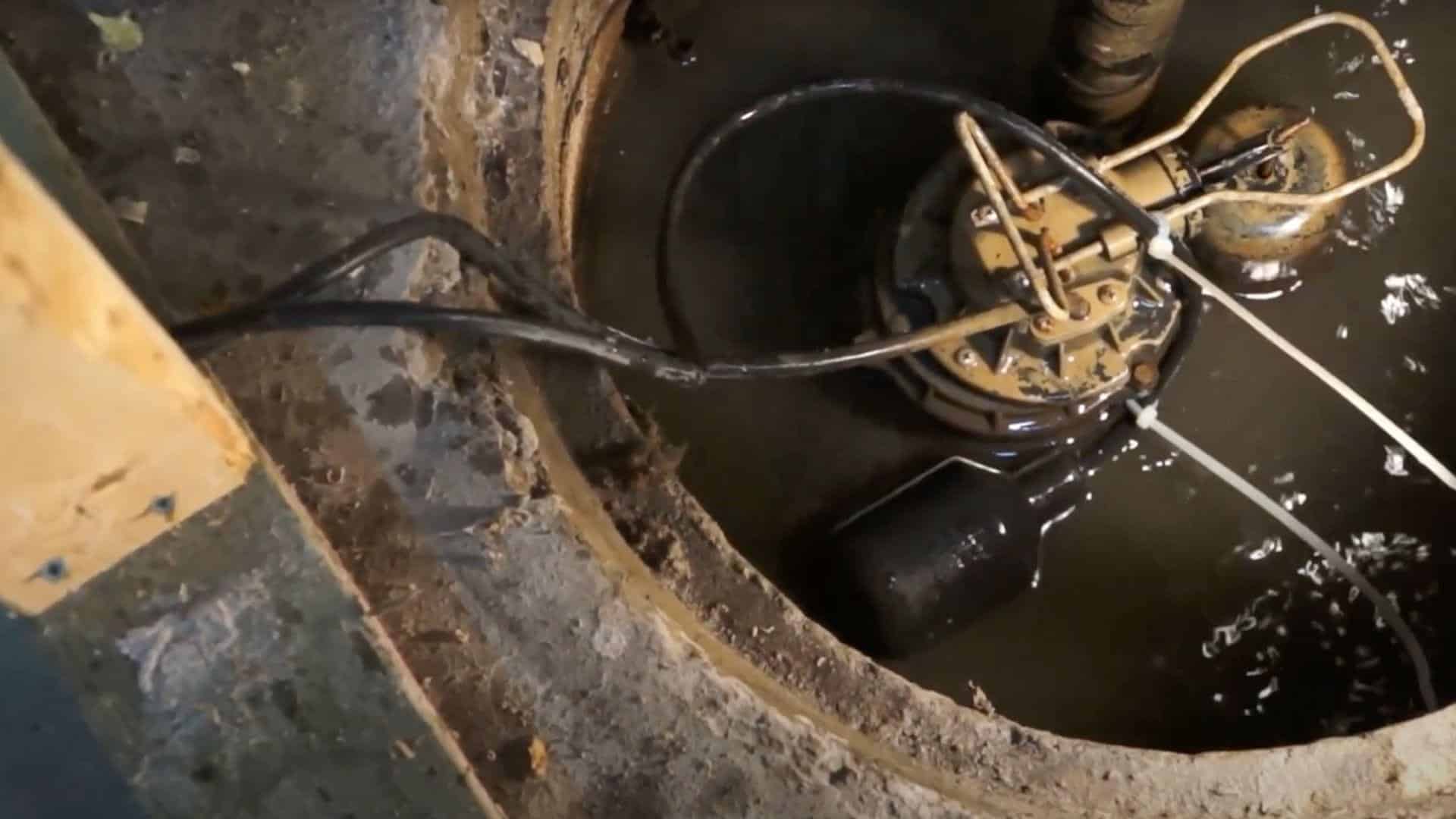
Testing involves monitoring the system through a complete water cycle to verify proper function. When water enters the pit and raises the float, it should tilt upward, activating the pump to begin removing water.
As the pump drains water and the float tilts downward, the switch should cut power and stop the pump completely. This cycle confirms that the repair was successful, and the pump will now operate only when needed.
Video Tutorial
Check out the video for more insights! Watch a step-by-step demonstration of how to fix the sump pump if it won’t stop running.
By – Thumb and Hammer
When to Call a Professional?
Some sump pump problems go beyond basic DIY fixes and require professional expertise. Avoid costly damage and potential safety issues by entrusting complex repairs to a professional.
Call a professional immediately if you encounter electrical hazards, need motor replacement, or face structural water problems that pump repairs can’t solve.
- Electrical Issues: Sparks, frequent breaker trips, or complex wiring problems require the expertise of licensed electricians.
- Motor Replacement: Heavy motors require professional tools and expertise for safe installation.
- Drainage Problems: Mainline blockages or septic issues cause water flow that pump repairs can’t solve.
- Foundation Water Issues: Cracks or grading problems require the expertise of waterproofing specialists, not just pump fixes.
Preventive Maintenance Tips
- Regular maintenance ensures your sump pump operates properly and prevents most continuous running issues.
- Setting up a basic maintenance routine takes just a few minutes, but it significantly extends your pump’s life.
- Test the float switch monthly by pouring water into the pit to check if the pump starts and stops correctly.
- Clean debris from the pit, including leaves, dirt, and sediment that can clog the float or system.
- Check the discharge pipe for blockages, ice, or damage that prevents proper water flow.
- Consider installing a sump pump monitor or battery backup.
- Inspect all connections and examine wires and fittings for looseness, corrosion, or visible damage.
Conclusion
A sump pump that won’t stop running is usually fixable with a simple replacement of the piggyback float switch, which doesn’t require expensive professional help.
Installing a mechanical float switch with piggyback plug offers a reliable solution that bypasses your pump’s original faulty switch system while maintaining proper water level control.
Most homeowners can complete this installation in under an hour using basic tools, with the replacement switch typically costing under $30 from any hardware store.
This simple fix prevents premature pump burnout, reduces energy costs, and gives you peace of mind knowing your basement protection works properly when you’re away from home.
What’s your experience been with sump pump problems? Have you tried installing a piggyback switch solution yourself?
Frequently Asked Questions
How Long Can a Sump Pump Run without Stopping?
Intermittent motors should run only 20-30 minutes per hour. Continuous-duty motors can operate safely for up to 24 hours without damage.
How Much Does It Cost to Replace a Sump Pump?
Total replacement costs range from $800 to $1,600, depending on the pump type and the plumber’s experience. Labor and materials affect final pricing.
What Is the Life Expectancy of A Sump Pump?
Most sump pumps last 7-10 years with proper maintenance and care. Usage frequency, pump quality, and type determine variations in actual lifespan.

